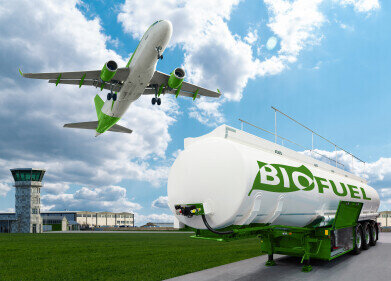Biofuel Industry News
How Have Biofuels Changed Over Time?
Jun 04 2021
Derived from plant material or animal waste, biofuels are revolutionising energy generation. Sourcing feedstock material from easily replenishable sources has positioned biofuel as a renewable energy source that could drastically reduce global emissions and help to combat climate change. Biofuels have evolved significantly over the past few decades, with some of the biggest breakthroughs highlighted below.
The advent of biofuel
The term “biofuel” was first coined in 1984 when an Austrian agricultural college successfully manufactured diesel using sustainable feedstock material. While it wasn’t until the 1980s that biofuel started garnering attention, some historians credit German mechanical engineer Rudolf Diesel with the concept. Not only did he invent the first diesel engine in the late 1800s, but he also experimented with the use of peanut oil as a fuel. For this reason, some people refer to Diesel as the grandfather of biofuel.
Eco-friendly alternatives
Europe has been commercially manufacturing biodiesel since 1992, with Germany the largest producer. The United States is also a biodiesel champion, with Yellowstone National Park sourcing fuel from the University of Idaho to power its trucks. Other national parks soon followed suit, embracing biodiesel for its low emissions and eco-friendly credentials.
Experimenting with feedstocks
From beer by-products to marine algae, the scope for biofuel feedstocks is enormous. Stinkweed, a flowering plant considered a weed by most dairy farmers, is the latest feedstock to win headlines. While the plant harbours a bad reputation for adding a sour taste to the milk of dairy cows, a new genetically modified version supresses the “stink” compound and produces a useful oilseed crop that can be used not as livestock feed but also to produce lower-carbon biofuels. Camelina and carinata, also known as false flax, are also gaining traction for their versatility and environmental benefits.
Biofuels for aviation
Biofuels are also making waves in the aviation sector, with a US House of Representatives subcommittee recently meeting with industry representatives to discuss the adoption of renewable fuels. While few airlines have transitioned to sustainable aviation fuels (SAFs) there is huge potential, with US Representative Rick Larsen saying tax credits could play a big role in uptake.
“There’s not a lot of SAF (sustainable aviation fuel) being used right now relative to the U.S. demand for aviation fuel writ large, but there’s a lot coming online. The biggest effort from a policy point of view is to include the aviation fuel in the blender’s tax credit,” says Larsen.
For more insight into how biofuels have advanced over the decades and what’s next for the sector, don’t miss ‘The Evolution of Biofuels.’
Digital Edition
PIN 25.3 June/July
June 2024
Analytical Instrumentation - Recent Advances In Various Bench Scale Accelerated Oxidative Testing Methods For Fuels - Petrochemical Industry: Anton Paar Solutions Streamline Processes, Reduce H...
View all digital editions
Events
Jul 30 2024 Jakarta, Indonesia
Jul 30 2024 Jakarta, Indonesia
China Energy Summit & Exhibition
Jul 31 2024 Beijing, China
Jul 31 2024 Chengdu, China
Aug 05 2024 Moon Township, PA, USA


















